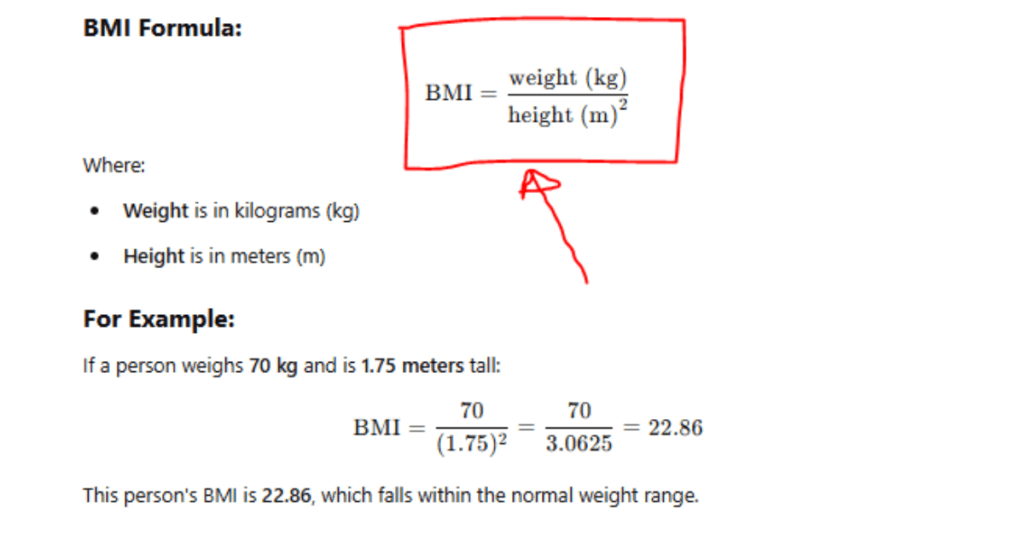Body Mass Index (BMI) is a simple yet effective measurement used to assess a person’s weight to their height. The BMI formula helps determine whether an individual is underweight, normal weight, overweight, or obese.
Understanding how BMI is calculated is important for tracking your health and fitness goals. In this guide, we will explain the BMI formula, show you how to calculate it and provide insights into what your BMI score means for your health.
BMI Formula
The BMI (Body Mass Index) is a simple calculation to assess whether a person has a healthy body weight for a given height. The formula to calculate BMI is as follows:

How is BMI Calculated?
To calculate BMI, you need two pieces of information:
- Your weight (in kilograms or pounds)
- Your height (in meters or inches)
Once you have this information, divide the weight by the square of height to calculate your BMI.
What is BMI?
BMI stands for Body Mass Index, a numerical value calculated using a person’s weight and height.
It provides a quick and easy way to categorize individuals into different weight groups such as underweight, normal weight, overweight, or obese.
While BMI is widely used, it’s important to note that it doesn’t account for factors like muscle mass, bone density, or distribution of fat.
BMI Classification (according to WHO):
- Underweight: BMI < 18.5
- Normal Weight: BMI 18.5 – 24.9
- Overweight: BMI 25 – 29.9
- Obese: BMI ≥ 30
Why is BMI Important for Health?
BMI is used to quickly assess if your weight is healthy relative to your height. Understanding your BMI can help you:
- Monitor your health: A higher BMI can indicate an increased risk for chronic conditions such as diabetes and cardiovascular disease.
- Track fitness goals: Whether you aim to lose or maintain a healthy weight, calculating your BMI can guide your progress.
- Personalize your health plan: Knowing your BMI lets you make informed decisions about your diet and exercise routine.
Limitations of BMI
While BMI calculation is a good starting point, it has limitations.
It doesn’t differentiate between muscle mass and fat mass, meaning individuals with high muscle mass may have a high BMI despite being fit and healthy. Additionally, BMI does not consider factors such as age, sex, and distribution of fat.
How to Improve Your BMI
If your BMI falls into the overweight or obese category, there are steps you can take to improve it:
- Exercise regularly: Incorporating cardio and strength training can help you lose excess weight and build muscle.
- Eat a balanced diet: Focus on nutrient-dense foods like vegetables, lean proteins, and whole grains while reducing your intake of processed foods.
- Consult a healthcare professional: If you’re unsure how to reach a healthy BMI, a professional can offer personalized guidance based on your unique health needs.
Conclusion
Understanding the BMI formula and how BMI is calculated is crucial for monitoring your health and making informed decisions about your lifestyle.
Regularly calculating your BMI can help you maintain a healthy weight and avoid the risks associated with being underweight, overweight, or obese. Use the BMI calculator to track your progress and take charge of your health today.
